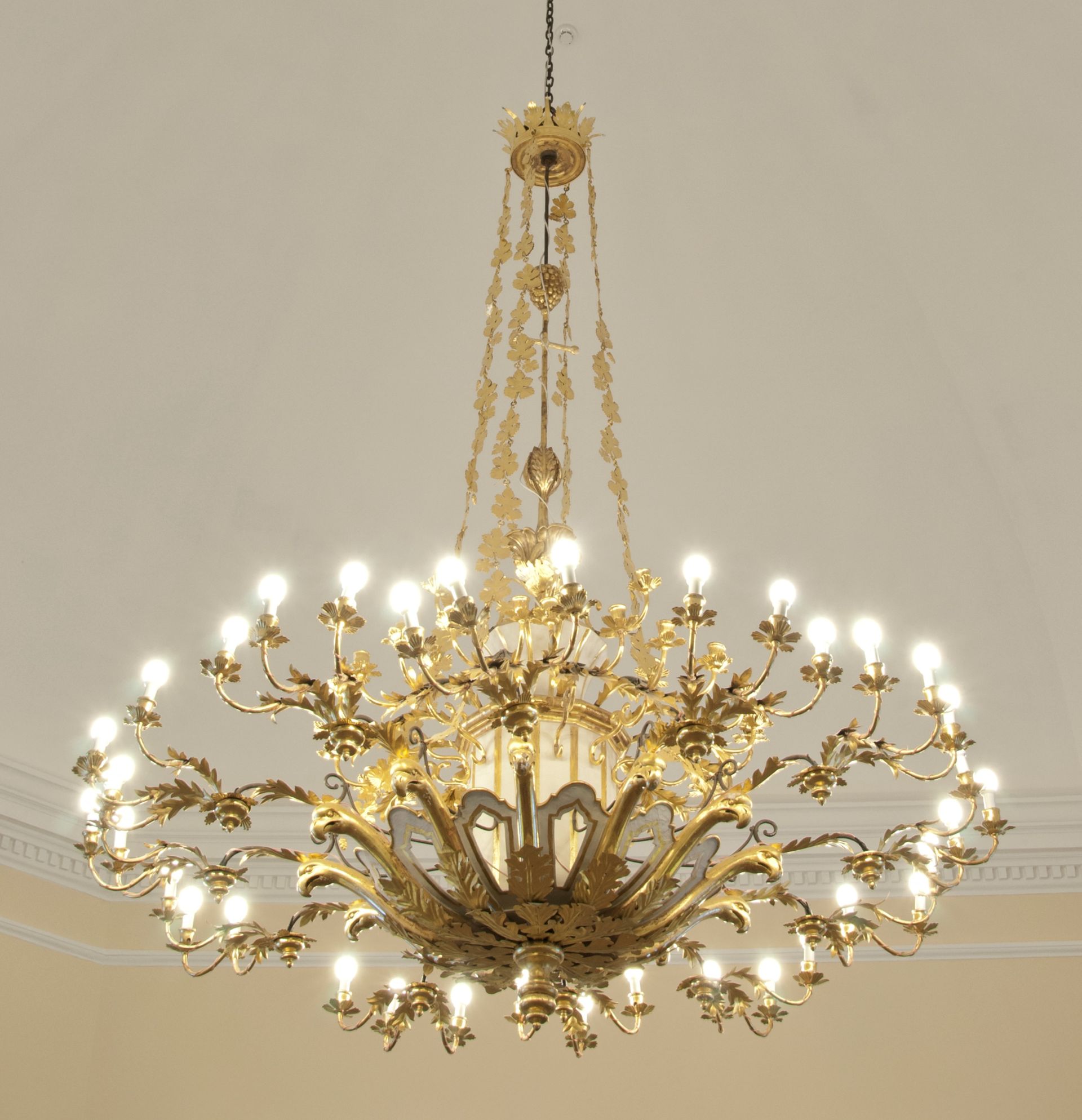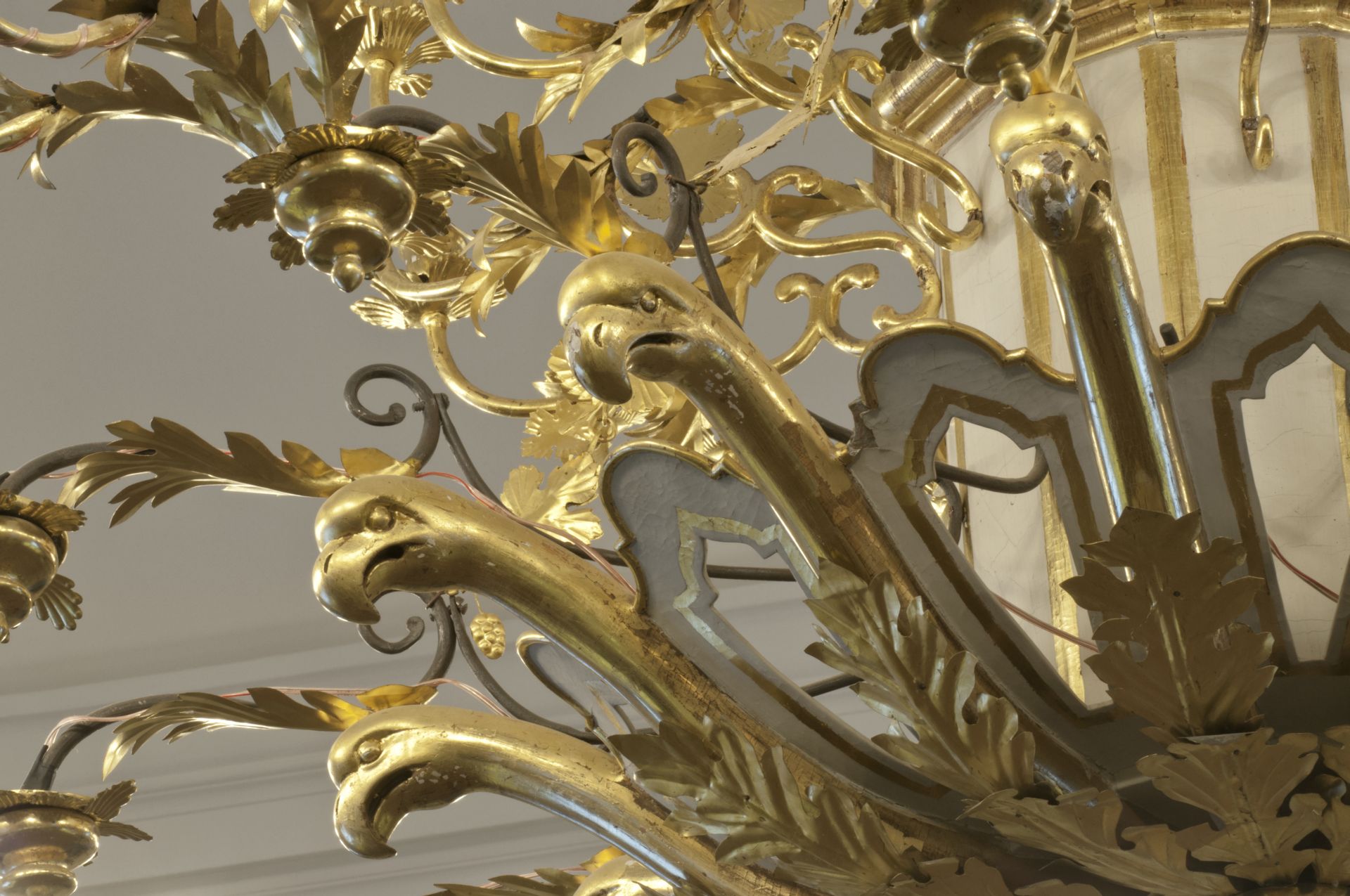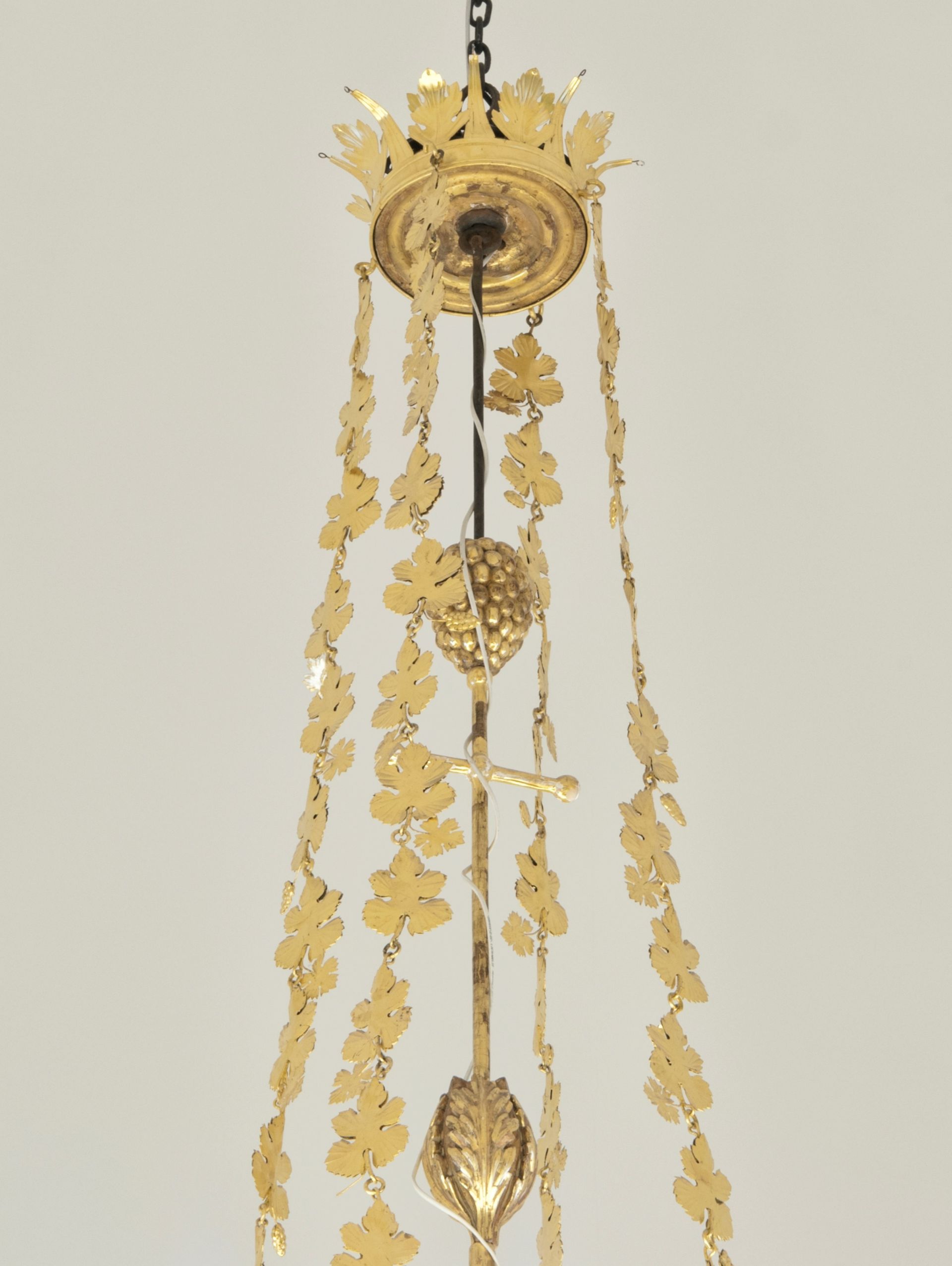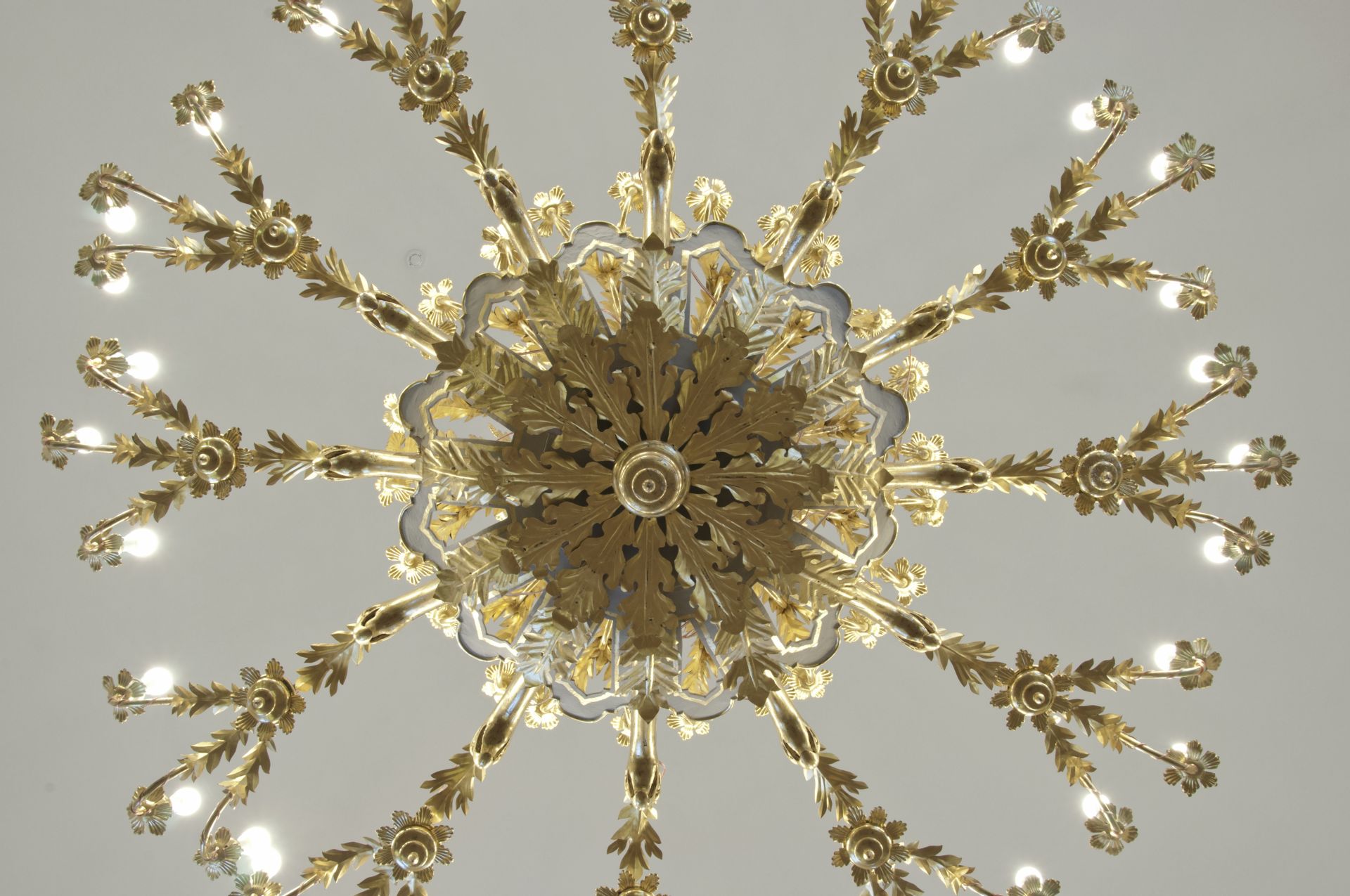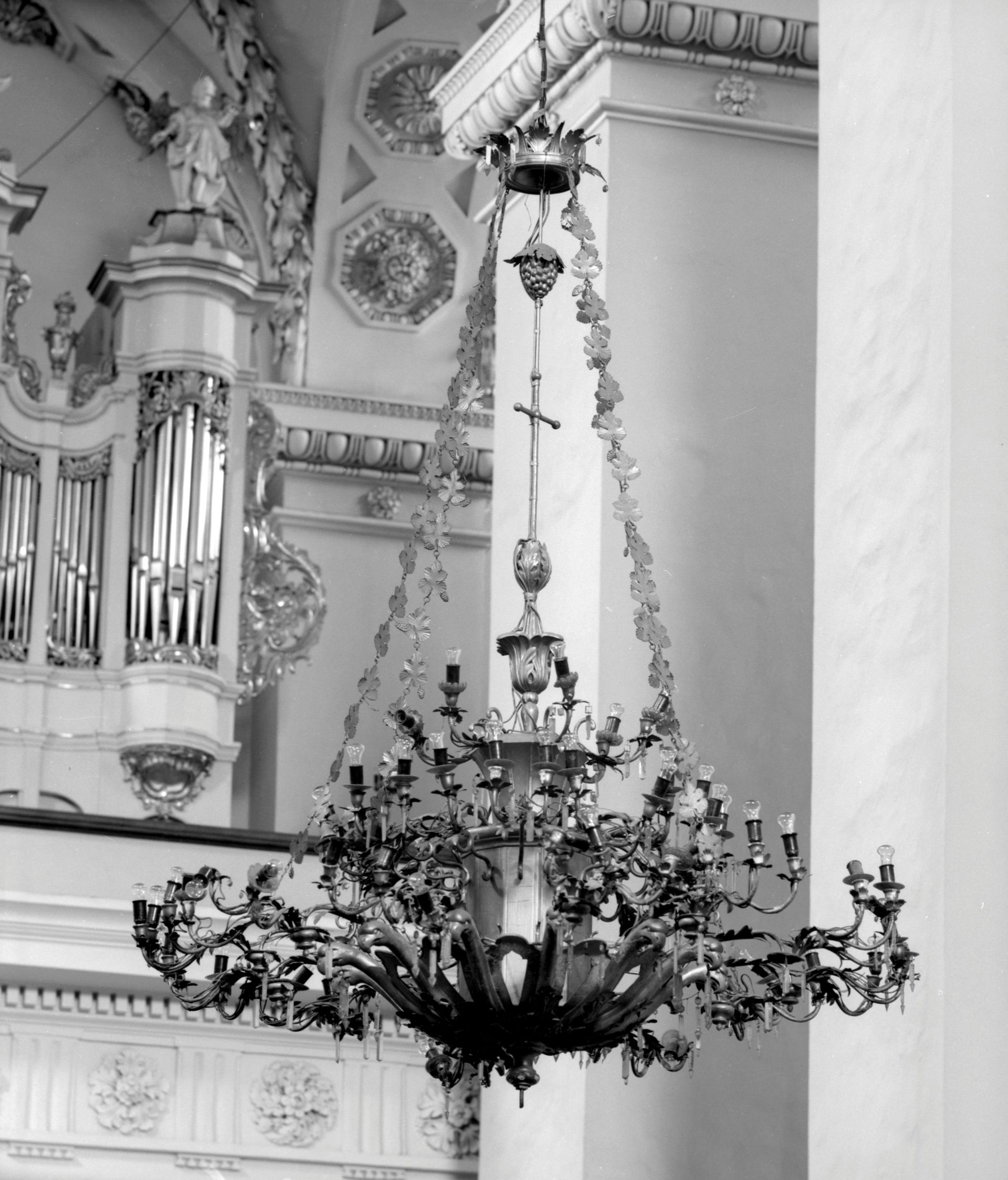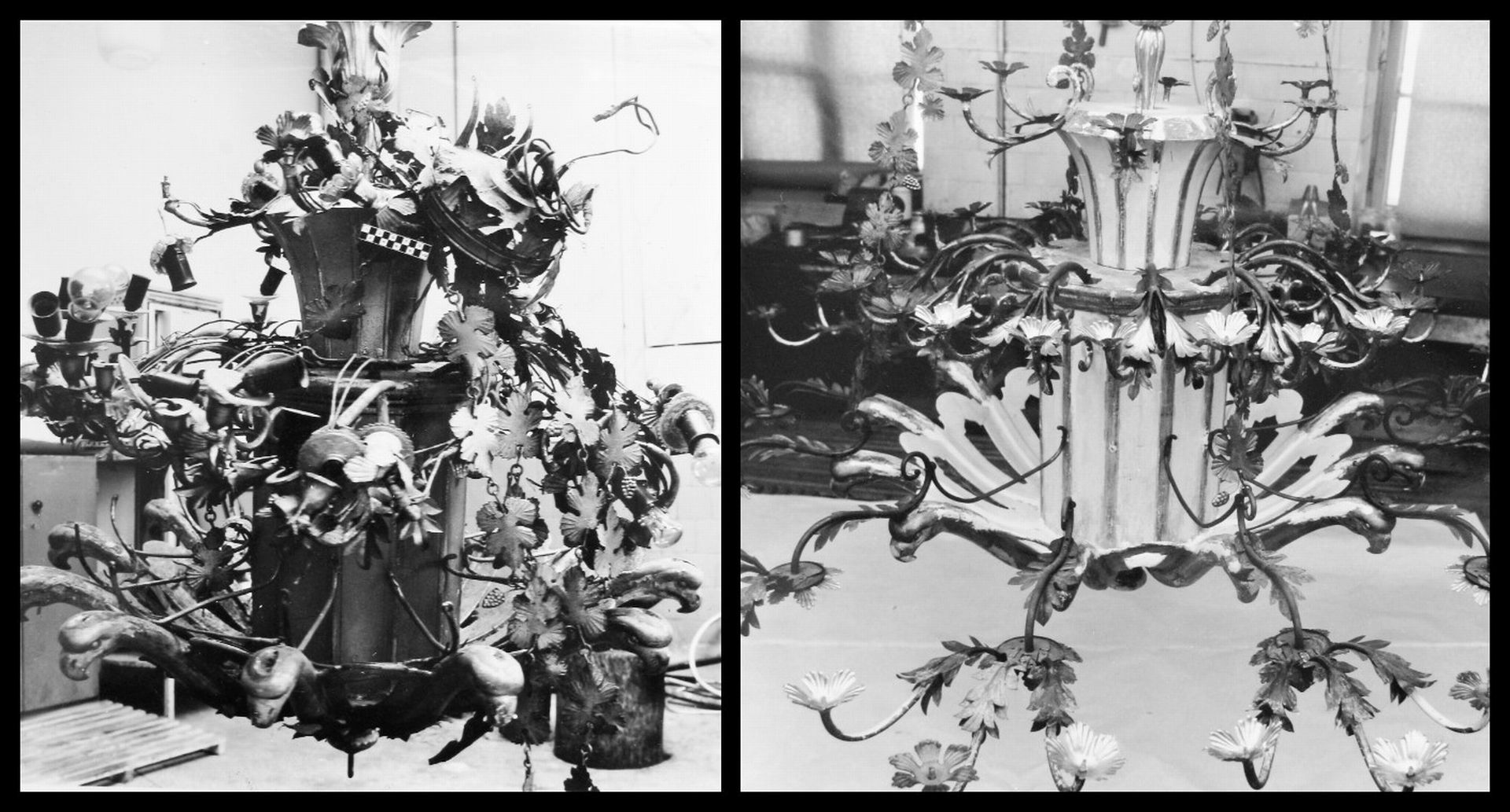Lithuanian National Museum of Art
Inv. No. TM-521
Address: Arsenalo st. 3A, Vilnius (currently on exhibit at the Counts Tyszkiewicz Palace in Palanga, Vytauto str. 17, Palanga)
Time of origin: 1787–1803
Place of origin: Vienna, Austria (?)
Material, Technique: iron: beating, embossing, cutting; timber: carving, painting; papier-mâché: painting; gilding
Dimensions: height – 300 cm, diameter with arms – 220 cm
The stem-type chandelier consists of three-storey, gradually descending up crowns with arms and sockets for candles. All parts of the chandelier are thread on a 3 m long rod, which terminates with a small sphere at the bottom. The lowest and biggest crown 220 cm in diameter is composed of 12 wooden eagle heads and decorative plates of papier-mâché between them. On the top of each eagle's head is an arm decorated with acanthus leaves, which branch out into three more arms — sconces for candles. They terminate with stylized flower blossoms with wooden cups for candles. A rosette decorates the joining place of sconces and arms in the lower, most visible side of the chandelier. The stem of the chandelier — dodecahedron pillar arises from the largest crown adorned with eagle heads. From the top of it, twelve S-form arms fall downwardly with two sconces on each of them. A smaller also dodecahedron pillar is erected on the afore-mentioned pillar with a crown. Its shape is no longer perpendicular but expanding upwards. The crown is composed of six arms with only one sconce for the candle. Above the gradually descending three crowns with mortars of the chandelier, four decoration details are mounted: two elements resembling a blossom formed from acanthus leaves and unblown bud, cross and a decorative gilded bunch of grapes. The chandelier terminates with a crown 25 cm in diameter, from which four chains of tin grape leaves and bunches fall downwardly. The metal parts of the chandelier are gilded; the wooden stem is painted in white and in some places covered with gold stripes.
The chandelier was transferred for restoration to Pranas Gudynas Restoration Centre in 1985; it was severely perished and damaged by corrosion: arms of the crown were broken and deformed, decorative elements folded or felt down and glass pendants were lost. During the restoration, missing parts were restored, corrosion was removed, and many other works that returned the exposition view to the chandelier were completed. In 1988, the restorers Regimantas Paulionis and Kęstutis Puodžiukas completed the restoration of the chandelier [3,4].
The chandelier is also mentioned in historical sources. The act of the visitation of the Cathedral of Vilnius (1828) mentions that two luxurious chandeliers hanging in the middle of the Cathedral and presbytery were brought from Vienna in 1803 [1]. The photographs of the interior from the first half of the last century helped to identify the location of the chandelier in the Cathedral and the earlier (it is unclear whether it is primary) appearance. The chandelier is hanging in the central part of the Cathedral, its arms and decorative crown next to the hanging loop at the top is decorated with crystal/glass (?) pendants that have not survived until the present.
It is known from iconographic sources that analogous chandelier is in Holy Trinity Church in Vecvārkava, Latvia. Large chandelier made by the same unknown workshop or craftsman was hanging in the Church of the Exaltation of the Holy Cross in Bistryčia, Grodno region (no information regarding survival and condition) [2]. The slightly smaller chandelier was recorded in the photograph by Henrikas Gaičevskis in the Church of the Visitation of the Blessed Virgin Mary in Šlienava (Kaunas district) in 1997 (no information regarding survival and condition) [5].
The chandelier is highly valuable for its composition and mixed performance technique. It is one of the most valuable chandeliers in Lithuania.
Literature and sources:- 1828 m. Vilniaus katedros vizitacijos aktas, in: Vilniaus universiteto bibliotekos Rankraščių skyrius, f. 57, b. Б 53–1, p. 22.
- Bistryčios Šv. Kryžiaus Išaukštinimo bažnyčios sietynas, Juljuszo Kłoso nuotr., 1925, in: Lenkijos mokslų akademijos Meno instituto archyvas (Instytut Sztuki Polskiej Akademii Nauk).
- Kilnojamojo kultūros paminklo restauravimo pasas, Metalo restauravimo skyrius, rest. prot. Nr. 293/1022, inv. Nr. TM-521, Lietuvos dailės muziejaus Prano Gudyno restauravimo centras.
- Kilnojamojo kultūros paminklo restauravimo pasas, Medžio polichromijos skyrius, rest. prot. Nr. 44/65, inv. Nr. TM-521, Lietuvos dailės muziejaus Prano Gudyno restauravimo centras.
- Šlienavos (Kauno r.) Švč. Mergelės Marijos Apsilankymo bažnyčios sietyno fotografija, Henriko Gaičevskio nuotr., 1997, in: Kultūros paveldo centro Kilnojamųjų objektų poskyrio archyvas.
- Valtaitė Alantė, Sietynas, in: Lietuvos sakralinė dailė. XIX–XX a. pradžia, t. 5. Knygos, dokumentai, parodos kronika, XI–XX a. Vilnius: Lietuvos dailės muziejus, 2009, p. 131.
